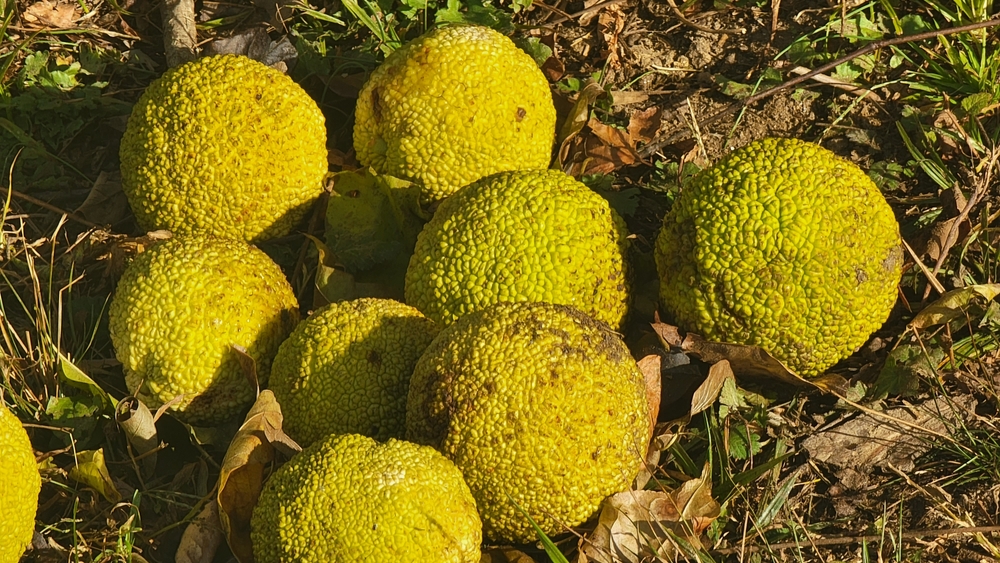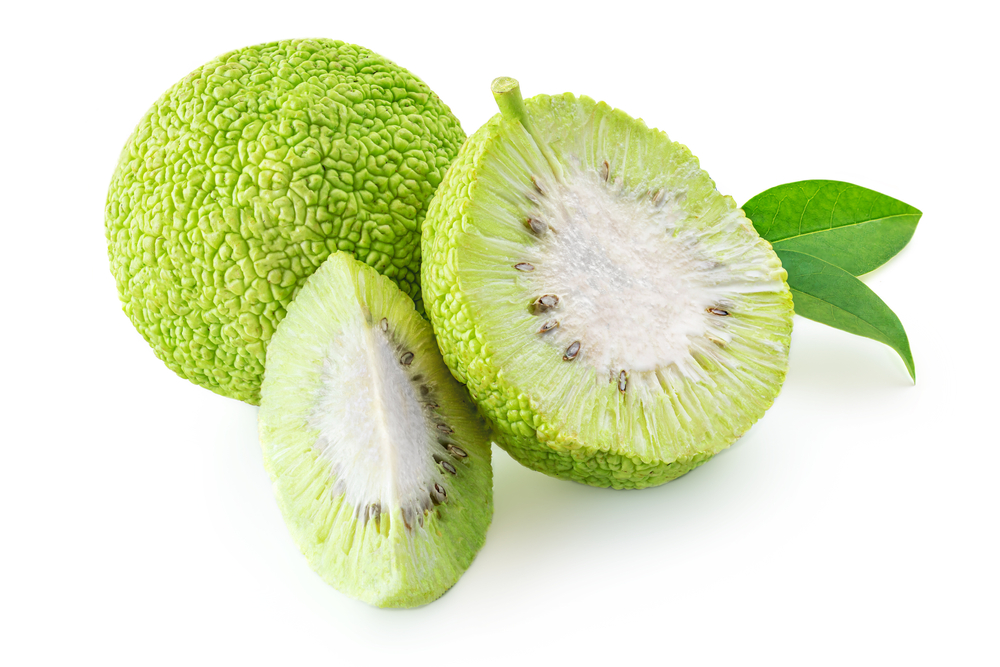Have you ever heard of hedge apples? If you haven’t heard the name, you still might have at least seen one before, not knowing what it was. These large, lumpy, green fruits are odd in appearance and confusing to their finder. After all, are they edible? What can you do with them? Are they even a fruit? Read on if you’re curious to find out.
Hedge Apples: Exploring Their Nature, Uses, and Edibility

Hedge apples, scientifically known as Maclura pomifera, are peculiar green fruits that often capture attention due to their unique appearance and role in folklore. Commonly found in North America, their usage and edibility have long been subjects of curiosity. The name hedge apple was given due to their tendency to grow on the edges of forests or in hedges, but they can also be found growing wild in other areas. They are related to mulberries and figs; however, they are not a type of berry. Hedge apples are actually the fruit of an American tree species that bears large green fruits with a hard shell. (1, 2)
Read More: What Those Numbers on Fruit Stickers Really Mean
What are Hedge Apples?

Hedge apples are large, round, or irregularly shaped fruits that typically range from 4 to 6 inches in diameter. They have bumpy, pale green outer skin and emit a mild, distinct fragrance. Despite being colloquially referred to as apples, hedge apples are not true apples and are not related to the fruit we commonly consume, such as Golden Delicious or Granny Smith.
Natural Habitat and Cultivation

Hedge apples are native to the central United States, primarily found in regions spanning from Texas to Nebraska and eastward to Indiana and Louisiana. These tree-like plants, also known as Osage orange or horse apples, originated in the prairies and river bottoms of the Mississippi Valley.
In the wild, hedge apples are primarily found growing as understory trees, often forming dense thickets. Although they prefer well-drained soil, they can adapt to various conditions, including clay or sandy soil. Their hardiness and resistance to pests make them popular choices for windbreaks and natural barriers. It is worth noting that hedge apples can also be grown domestically. Many individuals have incorporated them into their home landscapes due to their unique appearance and purported insect-repelling properties.
Uses of Hedge Apples

Hedge apples serve a range of practical and decorative purposes. Some of the most common uses include (3):
1. Natural Insect Repellant

One of the most well-known claims about hedge apples is their ability to repel insects, particularly spiders. While there is some anecdotal evidence supporting this claim, scientific studies have failed to provide conclusive evidence of their effectiveness. However, the strong scent of these fruits may deter insects to some extent.
2. Decorative Elements

Due to their vibrant green color and distinctive texture, hedge apples are often used as decorative items in floral arrangements or as stand-alone ornamental pieces. They can be displayed in a bowl, on a mantelpiece, or incorporated into wreaths and centerpieces for an eye-catching touch.
Read More: Why You Should Never Buy Precut Fruit
3. Crafting and DIY Projects

Hedge apples are also popular in crafting and DIY projects. Whether used as natural projectiles in slingshots or sliced into decorative pieces, the unique appearance of these apples allows for creative experimentation.
4. Traditional Medicine

In some traditional medicine practices, hedge apple extracts or compounds derived from the fruit’s constituents have been used for various purposes, including as an antimicrobial or a tonic. However, scientific validation for these medicinal claims is limited, and it is essential to consult a healthcare professional before using hedge apples for medical purposes.
Are Hedge Apples Edible?

Despite their name, hedge apples are not considered edible fruits for humans. The fruit’s milky sap and the latex-like substance present in its skin can cause skin irritation or allergic reactions in some individuals. Additionally, the taste of these apples is intensely bitter and unpalatable. Therefore, they are not typically consumed in culinary contexts.
It is important to note that while hedge apples are not edible for humans, certain animals, such as squirrels, deer, and livestock, may feed on them. In fact, the fruit’s primary purpose in the natural environment is thought to be as a food source for wildlife during the winter months when other food options are scarce.
The Bottom Line

Hedge apples are fascinating fruits that are often misunderstood due to their name and unique appearance. Although they are not edible for humans, they do find their utility in various domains. Whether as decorative elements, natural insect repellants, or crafting materials, these fruits continue to intrigue and inspire curiosity. While their effectiveness in certain applications may be debated, their intriguing nature and historical significance make hedge apples a subject worth exploring further.
Read More: Eating This Fruit Has Been Associated With Lower Risk Of Cardiovascular And Coronary Heart Disease
Sources
- “Osage orange.” Britannica
- “What are hedge a pples?” Hort News.
- “The odd history of the Osage orange tree.” National Geographic. Douglas Main. November 23, 2021.

